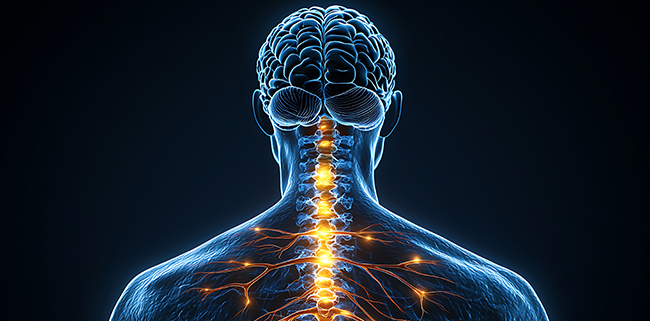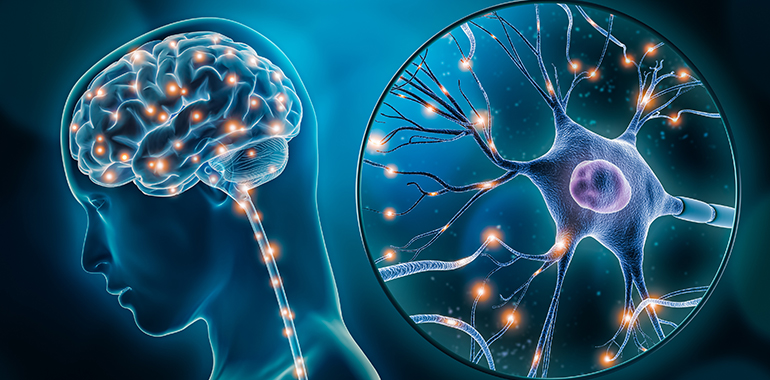Chiropractic Adjustments: How they can Increase Your Strength
Groundbreaking research now shows that chiropractic adjustments can fine-tune the way the nervous system controls your muscles.
Do you work out at the gym, pumping iron to get stronger? If you do you may be fascinated to know about this recent study conducted in New Zealand, because the way your spine works actually influences how strong you are.
The way your spine works actually influences how strong you are
Research Study
What the study found was that the those who received chiropractic care were actually able to produce 16% more force in their leg muscles after the chiropractor had gently checked and adjusted any dysfunctional spinal segments.
References
- Niazi IK, Turker KS, Flavel S, et al. Changes in H-reflex and V-waves following spinal manipulation. Exp Brain Res 2015.
- Vila-Cha C, Falla D, Correia MV, et al. Changes in H reflex and V wave following short-term endurance and strength training. Journal of applied physiology (Bethesda, Md : 1985) 2012;112(1):54-63.
- Christiansen TL, Niazi IK, Holt K, Nedergaard RW, Duehr J, Allen K, Marshall P, Türker KS, Hartvigsen J, Haavik H. The effects of a single session of spinal manipulation on strength and cortical drive in athletes. European journal of applied physiology. 2018 Apr 1;118(4):737-49.
Adjustments Improve Strength
New research is revealing that when chiropractors adjust the spine, they can actually help your muscles perform more efficiently.
Your spine does more than support your body — it plays a vital role in how your brain controls muscle strength and endurance.
The Spine-Muscle Connection
A major review, published in the European Journal of Applied Physiology by Dr. Heidi Haavik and colleagues1, brings together decades of research on how the spine and brain work together to control movement. The study looks at what happens when chiropractors deliver a quick, gentle thrust to a spinal joint (what’s called a “high-velocity, low-amplitude” adjustment).

Your spine is more than a stack of bones. From athletes chasing peak performance to older adults wanting to stay strong, muscle efficiency matters for everyone.
Groundbreaking research now shows that chiropractic adjustments can fine-tune the way the nervous system controls your muscles. The spine isn’t just a column of bones holding us upright. Each joint is packed with sensors that constantly feed information to the brain. This information tells your nervous system where your body is in space and how your muscles should move.
What disrupts the signal to your brain?
Life takes its toll — stress, poor posture, pain, or injury can cause certain spinal joints to stop moving properly. This disrupts the signals your brain receives, because when these spinal joints become stiff or don’t move properly, the sensors don’t send accurate signals to your brain. Researchers call this a central segmental motor control problem — a bit of a mouthful, but in simple terms, it means the brain is no longer getting the best input from the spine.
Your chiropractor calls this a vertebral subluxation – also a mouthful, but science is unlocking the secrets of why you need to know about them.

What adjustments do
Chiropractors use quick, precise movements that stretches the small muscles surrounding the dysfunctional spinal bones. This is called an adjustment (that familiar “click” or “pop”). According to the review, these adjustments help restore proper input to the brain that result in:
- More muscle power
- Faster muscle reactions
- Less fatigue
- Brain boost and recalibration
Why this matters?
Adjustments appear to “reset” how the brain processes movement – improving efficiency. This also seems to have widespread effects on the body as the brain recalibrates. For athletes, this could mean a real performance boost. For older adults, it might mean maintaining strength and reducing fall risk. And for anyone under daily stress, it can help fine-tune how efficiently the body functions and adapts.
References
- Haavik, Kumari, Holt, Niazi, Amjad, Pujari, Türker, and Murphy. 2021. The contemporary model of vertebral column joint dysfunction and impact of high-velocity, low-amplitude controlled vertebral thrusts on neuromuscular function. European Journal of Applied Physiology, 121(10), pp.2675-2720.
Reaction Times
How quickly we react to a stimulus or situation is called our reaction time. This will depend on how fast our brain can sense what’s happening around us, then process that information, come up with a reaction and perform the appropriate response.
Your reaction time depends on how efficiently your brain and nervous system are working
The Brain and Nervous System
The reason that chiropractors are interested in reaction time is that chiropractic care aims to improve the communication between your brain and your body so you are better able to react and respond to your environment. When your brain can accurately perceive what is going on inside and out, it can better control your body for the situation at hand, and move your muscles in the right order and at the right speed.
Brain Perception
Researchers are discovering that chiropractic care really does seem to have an impact on how efficiently your brain can accurately perceive what is going on around you and react to it.
References
- Haavik H, Murphy B. The role of spinal manipulation in addressing disordered sensorimotor integration and altered motor control. J Electromyogr Kinesiol 2012;22(5):768-76. doi: 10.1016/j.jelekin.2012.02.012 [published Online First: 2012/04/10]
- Haavik H, Murphy B. Subclinical neck pain and the effects of cervical manipulation on elbow joint position sense. J Manipulative Physiol Ther 2011;34(2):88-97. doi: 10.1016/j.jmpt.2010.12.009 [published Online First: 2011/02/22]
- Holt KR, Haavik H, Lee AC, et al. Effectiveness of Chiropractic Care to Improve Sensorimotor Function Associated With Falls Risk in Older People: A Randomized Controlled Trial. J Manipulative Physiol Ther 2016 doi: 10.1016/j.jmpt.2016.02.003 [published Online First: 2016/04/07]
- Kelly DD, Murphy BA, Backhouse DP. Use of a mental rotation reaction-time paradigm to measure the effects of upper cervical adjustments on cortical processing: a pilot study. J Manipulative Physiol Ther 2000;23(4):246-51. doi: 10.1067/mmt.2000.106099 [published Online First: 2000/05/23]
- Lord SR, Menz HB, Tiedemann A. A Physiological Profile Approach to Falls Risk Assessment and Prevention. Phys Ther 2003;83(3):237-52.
- Lord SR, Fitzpatrick RC. Choice stepping reaction time: a composite measure of falls risk in older people. J Gerontol A Biol Sci Med Sci 2001;56(10):M627-32.
- Lord SR, Castell S, Corcoran J, et al. The effect of group exercise on physical functioning and falls in frail older people living in retirement villages: a randomized, controlled trial. J Am Geriatr Soc 2003;51(12):1685-92.
- DeVocht JW, Vining R, Smith DL, et al. Effect of chiropractic manipulative therapy on reaction time in special operations forces military personnel: a randomized controlled trial. Trials 2019;20(1):5-5. doi: 10.1186/s13063-018-3133-2
Reaction Times
How quickly do you react when someone pulls in front of you when you’re driving, or when a ball comes your way on the sporting field, or when you have a slip and need to catch yourself before you fall?

Are you accident prone or a ninja warrior? If you’re accident-prone, how can you bring out your inner ninja warrior?
We all react to these day-to-day challenges at different speeds. Some of us react slowly and some of us react really quickly. How quickly you react to a situation can actually be really important in many ways, from helping to prevent accidents on the road, to reaching your optimal potential on the sporting field.
Your reaction time depends on how efficiently your brain and nervous system are working!
How quickly we react to a stimulus or situation is called our reaction time, and will depend on how fast our brain can sense what’s happening around us, then process that information, come up with a reaction plan, and then perform the appropriate response.

As you can see from this description, your reaction time depends on how efficiently your brain and nervous system are working. So, what can you do to help improve the efficiency of your nervous system?
This is a really interesting question that chiropractic researchers have been trying to help answer. The reason that chiropractors are interested in reaction time is that chiropractic care aims to improve the communication between your brain and your body so you are better able to react and respond to your environment.
When your brain can accurately perceive what is going on inside and out, it can better control your body for the situation at hand, and move your muscles in the right order and at the right speed.1-3
Researchers have now published a number of studies that have shown that chiropractic care can actually make a difference to your reaction time.

One of the first really good studies to look at how chiropractic care affects reaction time was published back in 2000.4
In this study, the researchers asked a group of students to look at a computer screen that had a letter ‘R’ on it and to hit a key on the keyboard to show whether they thought the ‘R’ was the right way around or back to front. To make it tricky, the researchers rotated the ‘R’ to lots of different angles, that way the student being tested had to mentally rotate it back in their head to really work out if it was the right way around or not.
The researchers then got a chiropractor to either adjust the person or have them lie down on a chiropractic table, without doing an adjustment, as a control intervention. What the researchers found was that after an adjustment the study subjects improved their reaction time much more than the subjects who were in the control group. They concluded that the chiropractic adjustments may have affected how quickly their brain processed the information they were seeing, which was a really interesting finding.

In 2016, another group of researchers published a study that looked at how quickly a group of older people could take a step on a platform that had 4 panels that could light up.3 When a panel lit up, they’d have to stand on it as quickly as they could.
Being able to take a fast step is really important because scientists have shown that people who are quicker at taking a step are less likely to fall.5-6 In this study, they tested the older people before, during, and after receiving 12 weeks of chiropractic care or receiving their usual medical care.
What they found, was that after 12 weeks there was a dramatic, significant improvement in the chiropractic group’s step time. The improvement seen in reaction time in this study was actually 2 and a half times greater than a large clinical trial that looked at the effects of 6 months of exercise on the same stepping task.7
This might be really important when it comes to someone stopping themselves from having a fall if they trip or slip.
After 12 weeks there was a dramatic, significant improvement in the chiropractic group’s step time!
In another study that was published recently,
What they found, was that after 12 weeks there was a dramatic, significant improvement in the chiropractic group’s step time. The improvement seen in reaction time in this study was actually 2 and a half times greater than a large clinical trial that looked at the effects of 6 months of exercise on the same stepping task.8
Eight researchers tested a group of special operation forces military personnel to see whether chiropractic adjustments improved how quickly they could react and touch a set of panels on the wall in front of them that would light up at random. What they found in this study, was that when these elite soldiers were adjusted, they were quicker at reacting and responding to the lit panels than if they had no adjustment. This is a really significant finding because just imagine how important reaction time could be to a soldier!!
So, you can see that researchers are discovering that chiropractic care really does seem to have an impact on how efficiently your brain can accurately perceive what is going on around you and react to it. And maybe this could help you to move from being accident-prone to a ninja warrior.
If you want to get your ninja warrior on, why don’t you consider having your spine checked by your family chiropractor?
References
- Haavik & Murphy. J Electromyogr Kinesiol 2012;22(5):768-76.
- Haavik & Murphy. J Manipulative Physiol Ther 2011;34(2):88-97.
- Holt et al. J Manipulative Physiol Ther 2016. 39(4):267-78.
- Kelly et al. J Manipulative Physiol Ther 2000;23(4):246-51.
- Lord et al. Phys Ther 2003;83(3):237-52.
- Lord & Fitzpatrick. J Gerontol A Biol Sci Med Sci 2001;56(10):M627-32.
- Lord et al. J Am Geriatr Soc 2003;51(12):1685-92.
- DeVocht et al. Trials 2019;20(1):5-5. doi: 10.1186/s13063-018-3133-2. © 2020 Haavik Research Limited
Chiropractic and Golf
Millimetres in golf can be the difference between winning and losing a competition. That’s one reason that professional golfers will do everything they can to help them in their search for the perfect swing.
About 75% of professional golfers receive regular chiropractic care
Hitting the Golf ball further
Researchers in Brazil found from a research study that the golfers that got adjusted could hit the ball 8 meters further after the adjustment whereas the control group only improved by half a meter after the stretching session.
Chiropractic and Stretching
This study suggests that chiropractic care, in association with muscle stretching, seems to improve the ability of golfers to drive the ball when compared with muscle stretching alone.
References
- Editorial Staff. 18 Holes with a PGA Chiropractor. Dynamic Chiropractic 2008;26(15).
- Costa SM, Chibana YE, Giavarotti L, et al. Effect of spinal manipulative therapy with stretching compared with stretching alone on full-swing performance of golf players: a randomized pilot trial. J Chiropr Med 2009;8(4):165-70.
Golfers Receive Regular Care
Golf can be a game of millimeters. Did you know that 75% of professional golfers receive regular chiropractic care to help them play at their peak potential? 1
75% of professional golfers receive regular chiropractic care. Millimeters in golf can be the difference between winning and losing a competition.
Professional golfers will do everything they can to help them in their search for the perfect swing. A clubhead that’s angled a few millimeters off-center results in a drive hooking into the pond. Or a stance that’s a few millimeters too low which results in the divot flying further than the ball.

Chiropractors may not only help golfers to overcome injuries,1 they may also help them with their swing. In fact there was a really interesting research study published in 2009 that showed that chiropractic care helped golfers to hit the ball further which could make a big difference to a golfer’s score at the end of the day. 2
Brazilian Research Study
Researchers in Brazil performed a randomised controlled trial involving 43 golfers and looked at how far they could hit a ball over a four-week study period. They put the golfers into one of two groups. One was a control group who just did a basic stretching programme over the four weeks of the study. The other group did the same stretching programme, but they also got adjusted by a chiropractor once a week for 4 weeks and the researchers looked at how far they could drive the ball before and after getting adjusted over the 4 weeks.
The researchers collected a lot of data which, in general, showed the chiropractic group performed better than the control group throughout the study. But the most significant finding from the study was that at the last study session, the group that got adjusted could hit the ball 8 meters further after the adjustment, whereas the control group only improved by half a meter after the stretching session.

The group that got adjusted could hit the ball 8 meters further after the adjustment.
This study suggests that chiropractic care, in association with muscle stretching, seems to improve the ability of golfers to drive the ball when compared with muscle stretching alone. Although this was only a small study, that was a really interesting finding, and may mean that chiropractic care really can help golfers to improve their game.
So, if you want to get the most out of your golf game, take after the pro’s and see a chiropractor, because it may help you with those millimeters that can make the difference between the perfect drive and fishing your ball out of the pond.
References
- Dynamic Chiropractic 2008;26(15).
- Costa et al. Effect of spinal manipulative therapy with stretching compared with stretching alone on full-swing performance of golf players J Chiropr Med 2009;8(4):165-70.
Cerebellum Function
The cerebellum is extremely important for us to be able to perform everyday movements and tasks such as walking and reading and writing. It is also essential to being able to stay balanced and upright.
The cerebellum is known as the ‘little brain’ within your brain
Movement and Skills
The cerebellum is not just important for balance and accurate coordinated movements, but it’s also important for other cognitive tasks such as being able to pay attention to a task, or for language as well as the way we relate to fear and pleasure responses. And we know that the cerebellum is very important for learning new movements and skills.
References
- Daligadu J, Yielder P, Haavik H, Baarbe J, Murphy B. Alterations in Cortical and Cerebellar Motor Processing in Neck Pain Patients Following Chiropractic Manipulation. Journal of Manipulative & Physiological Therapeutics. 2013;In press.
- Popa LS, Hewitt AL, Ebner TJ. Predictive and Feedback Performance Errors Are Signaled in the Simple Spike Discharge of Individual Purkinje Cells. The Journal of Neuroscience. 2012;32(44):15345.
- Hewitt AL, Popa LS, Pasalar S, Hendrix CM, Ebner TJ. Representation of limb kinematics in Purkinje cell simple spike discharge is conserved across multiple tasks. J Neurophysiol. 2011/11/01 2011;106(5):2232-2247.
- Holt KR, Haavik H, Lee AC, Murphy B, Elley CR. Effectiveness of Chiropractic Care to Improve Sensorimotor Function Associated With Falls Risk in Older People: A Randomized Controlled Trial. J Manipulative Physiol Ther. Apr 2 2016.
- Haavik H, Murphy B. Subclinical neck pain and the effects of cervical manipulation on elbow joint position sense. Journal of Manipulative & Physiological Therapeutics. 2011;34:88-97.
Who sees a Chiropractor?
More and more people will see a chiropractor, but you may be surprised to know exactly why chiropractic care is becoming so much more popular. A recent study found that about 1 in 4 Americans have visited a chiropractor, and almost 20 million Americans see a chiropractor each year.
Chiropractic care helps improve your health and well-being
Why Chiropractic Care?
Although back and neck pain was the main specific health problem people gave for seeing a chiropractor, almost half of the chiropractic patients said they went for general wellness or disease prevention.
Benefits of Chiropractic Care
So why do so many people go to see a chiropractor?
It’s not just because they get a lot of help if they suffer from pain and other health problems. They go because they want to perform better on the sporting field or athletics track. They want to sleep better; they want to deal with stress better and to be better able to relax. They go because they want to improve their overall health and function at their best.
References
- Adams J, Peng W, Cramer H, et al. The Prevalence, Patterns, and Predictors of Chiropractic Use Among US Adults: Results From the 2012 National Health Interview Survey. Spine (Phila Pa 1976). Dec 1 2017;42(23):1810-1816.
How often should you see your chiropractor?
When you first see your chiropractor, you may be among the many people who ask, “how often do I need to come?”. The answer that you may want to hear is once. But chiropractic care, like most things that are really good for us, rarely makes a long-term difference to your health and wellness after just one visit.
Seeing your chiropractor can be a little like going to the gym. It takes time, frequency and follow up to retrain the spine to function well.
Maintenance Care
One reason for having to see a chiropractor regularly is because it usually takes years for the problem to develop which motivates someone to first see a chiropractor and it can take many visits to the chiropractor to correct that problem.
Care Plans
When you go and see your chiropractor know that their recommendations for your plan of care are based on what their clinical experience tells them is best for you and that the research suggests more frequent adjustments have the biggest positive impact on your health and wellness.
References
- Hodges PW, Moseley GL. Pain and motor control of the lumbopelvic region: effect and possible mechanisms. J Electromyogr Kinesiol. 2003;13(4):361-370.
- MacDonald D, Moseley GL, Hodges PW. Why do some patients keep hurting their back? Evidence of ongoing back muscle dysfunction during remission from recurrent back pain. Pain. Apr 2009;142(3):183-188.
- Ferreira ML, Ferreira PH, Hodges PW. Changes in postural activity of the trunk muscles following spinal manipulative therapy Manual Therapy August 2007;12(3):240-248.
- Haas M, Bronfort G, Evans R, et al. Dose-response and efficacy of spinal manipulation for care of cervicogenic headache: a dual-center randomized controlled trial. Spine J. Feb 23 2018.
Visiting a chiropractor
When you first see your chiropractor, you may be among the many people who ask, ‘how often do I need to come?’ Often the answer people want to hear is ‘once’ but chiropractic care, like most things that are really good for us, rarely makes a longterm difference to your health and wellness after just one visit.

One reason a single visit to your chiropractor may not make a long-term change is that it usually takes years for the problem to develop that motivates someone to first see a chiropractor and it can take many visits to the chiropractor to correct that problem.
Seeing your chiropractor can be a little like going to the gym. It takes time, frequency and follow up.
One way of looking at it is that it can be like the thousandth straw that breaks the camel’s back. A problem can build up day after day as you sit hunched over your desk, or bend and twist as you lift, or tense up as you deal with your daily stress and then one day, you bend to tie your shoelaces and all of a sudden something hurts! You can rest assured that tying your shoelaces isn’t what caused the problem, it’s simply the thousandth straw that broke the camel’s back (or was too much for your back) and that’s why you’re in pain.
There will usually be changes to the way the supporting muscles in your spine work that build up over time until your muscles can’t cope anymore and symptoms appear.1-2 So, seeing your chiropractor can be a little like going to the gym. It takes time, frequency, and follow up. Working with you to correct the problem and help your brain and the muscles in your spine communicate or ‘talk’ with each other again so you can regain the stability you need to function properly and resolve your aches and pains.3
But how long will this take and how often do you need to be checked by your chiropractor? Everybody is different, so your chiropractor will be guided by their clinical experience, and what your goals are when they recommend a care plan for you.
US Research Study
A new research study was recently published that suggests, in the early stages of chiropractic care, the more often you get adjusted, the better the results you enjoy, and this can also be better for you in the long term as well.4
In this study, that was conducted by scientists in America, they looked at 256 people who had chronic, regular headaches and divided them into groups who either received chiropractic care once a week, or twice a week, or three times a week, for up to six weeks, or they received no chiropractic care at all and instead were given light massages over the same 6-week period. Previous studies have shown that people with this kind of headache often respond well to chiropractic care.
The scientists in this study were most interested in how many visits per week to the chiropractor showed the best results. They looked at how many days a week a patient suffered from headaches at the end of the study and whether any changes in headache frequency between the groups were still there up to one year later. What they found was that the patients who were seen by their chiropractor most regularly, so up to three times a week, had fewer headaches than those who were seen once or twice a week, and they were much better than the patients who received no chiropractic care at all.
In fact, after one year, the patients that had been seen three times a week had over three fewer headaches per month compared to the patients who only received a light massage. So, these effects obviously lasted.
The more you get adjusted, the better the results that you will enjoy.

This study was done in people with chronic headaches, so we can’t be sure if the same differences occur in people with other problems who see a chiropractor. A similar study in patients with chronic low back pain did find that people who were adjusted more often had the best results, but the results weren’t as clear as the study done on patients with headaches.5
The studies suggest that seeing a chiropractor more often when you begin care has real, beneficial, long-term effects to the way your spine and nervous system works, but how much you benefit may depend on what’s wrong with your spine when you begin care.
So, when you go and see your chiropractor, know that their recommendations for your plan of care are based on what their clinical experience tells them is best for you, and that the research suggests more frequent adjustments has the biggest positive impact on your health and wellness.
References
- Hodges & Moseley. J Electromyogr Kinesiol 2003;13(4):361-70.
- MacDonald et al. Pain 2009;142(3):183-8.
- Ferreira et al. Manual Therapy 2007;12(3):240-48.
- Haas et al. Spine J 2018. 18(10): 1741-1754.
- Haas et al. Spine J 2014;14(7):1106-16.
Chiropractic Adjustments: Boosting Strength & Athletic Performance
Groundbreaking research now shows that chiropractic adjustments can fine-tune the way the nervous system controls your muscles.

